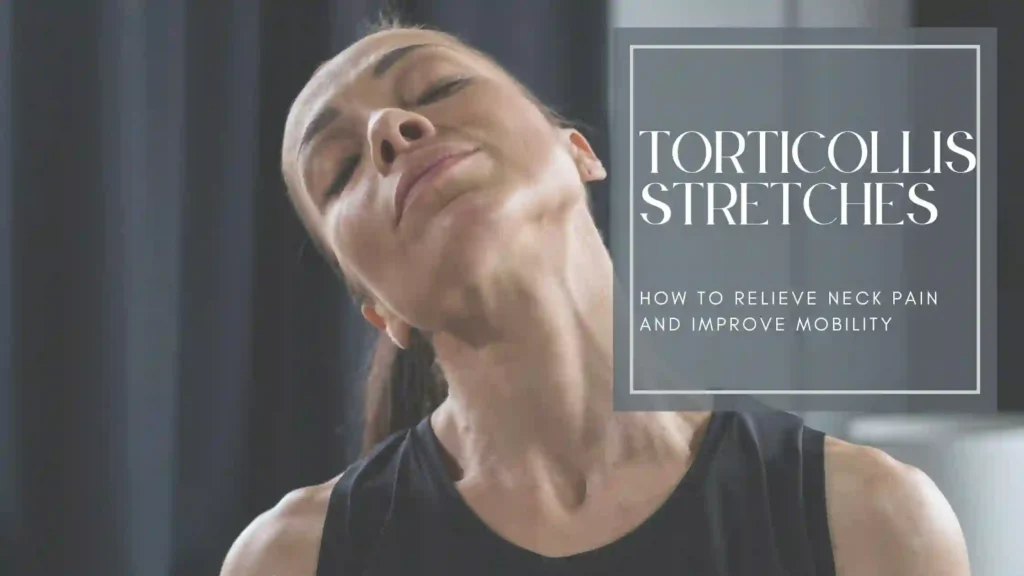Torticollis, also known as “wry neck,” can cause significant discomfort and limit your range of motion. Whether it stems from poor posture, an injury, or sleeping in the wrong position, torticollis can be managed with the right stretches. Here’s your guide to relieving pain and improving mobility with effective torticollis stretches.
What is Torticollis?
Torticollis is a condition where neck muscles contract involuntarily, causing the head to twist to one side. It can be congenital (present at birth) or acquired later in life. Common symptoms include:
- Neck pain and stiffness
- Limited range of motion
- Head tilting to one side
- Muscle spasms
If untreated, torticollis can lead to chronic pain and postural issues. Stretching, however, can make a significant difference.
Benefits of Torticollis Stretches
Stretching not only alleviates discomfort but also:
- Reduces muscle tension: Releases tight muscles for instant relief.
- Improves flexibility: Enhances neck range of motion.
- Prevents recurrence: Strengthens neck muscles to reduce future episodes.
- Boosts circulation: Promotes healing and reduces inflammation.
Let’s explore the best torticollis stretches you can try at home.
Best Torticollis Stretches to Relieve Pain
Before beginning, warm up with gentle neck rolls. Here’s a step-by-step guide:
1. Lateral Neck Stretch
Target area: Side neck muscles
- Sit comfortably with your back straight.
- Tilt your head to one side, bringing your ear toward your shoulder.
- Hold for 20–30 seconds.
- Switch sides and repeat.
Pro tip: For a deeper stretch, gently pull your head toward your shoulder with your hand.
2. Chin Tuck Stretch
Target area: Corrects forward head posture
- Sit or stand with shoulders relaxed.
- Tuck your chin toward your chest, creating a double chin.
- Hold for 5–10 seconds, then release.
- Repeat 10 times.
3. Sternocleidomastoid (SCM) Stretch
Target area: SCM muscle
- Sit upright and turn your head to one side.
- Tilt your head backward to feel a stretch along the front of your neck.
- Hold for 15–20 seconds.
- Switch sides and repeat.
4. Levator Scapulae Stretch
Target area: Neck and shoulder muscles
- Sit in a chair, grasping the seat with one hand.
- Tilt your head to the opposite side, looking down toward your armpit.
- Hold for 20–30 seconds.
- Switch sides and repeat.
5. Cat-Cow Stretch
Target area: Neck and spine tension
- Start on all fours, hands under shoulders.
- Inhale and arch your back, lifting your head (Cow pose).
- Exhale and round your spine, tucking your chin to your chest (Cat pose).
- Repeat 10–15 times.
6. Upper Trapezius Stretch
Target area: Upper back and neck
- Sit upright, grasping the side of your chair with one hand.
- Gently tilt your head to the opposite side.
- Hold for 20–30 seconds.
- Switch sides and repeat.
7. Wall Angels
Target area: Posture and upper back strengt
- Stand with your back against a wall, feet slightly forward.
- Raise your arms to form a “W” shape.
- Slowly raise your arms overhead, then return to the “W” position.
- Repeat 10 times.
Tips for Safe and Effective Torticollis Stretches
To get the most out of your stretches, follow these tips:
- Start slow: Avoid overstretching, especially when in pain.
- Breathe deeply: Relax your muscles with proper breathing.
- Listen to your body: Stop immediately if a stretch causes sharp pain.
- Stay consistent: Regular practice ensures long-term relief.
When to See a Doctor
While stretches can alleviate most symptoms, consult a doctor if:
- Pain persists despite regular stretching.
- You experience numbness or tingling in your arms.
- Your head position worsens.
- You suspect an underlying medical condition.
Take Control with Torticollis Stretches
Living with torticollis doesn’t have to be a struggle. By incorporating these simple yet effective stretches into your daily routine, you can relieve neck pain, improve mobility, and regain control over your well-being.
FAQs About Torticollis Stretches
Q1: How often should I do torticollis stretches?
A: Perform these stretches 2–3 times daily, especially during acute episodes.
Q2: Can stretching alone cure torticollis?
A: Stretching is highly effective but may require physical therapy or medical treatment for severe cases.
Q3: Are there stretches to avoid with torticollis?
A: Avoid forceful or aggressive stretches that cause sharp pain. Stick to gentle movements.
Q4: Can children with torticollis do these stretches?
A: Consult a pediatrician or physical therapist for age-appropriate stretches.
Q5: How long does it take to see improvement?
A: Many experience relief within a few days, but full recovery may take weeks with consistent stretching.

